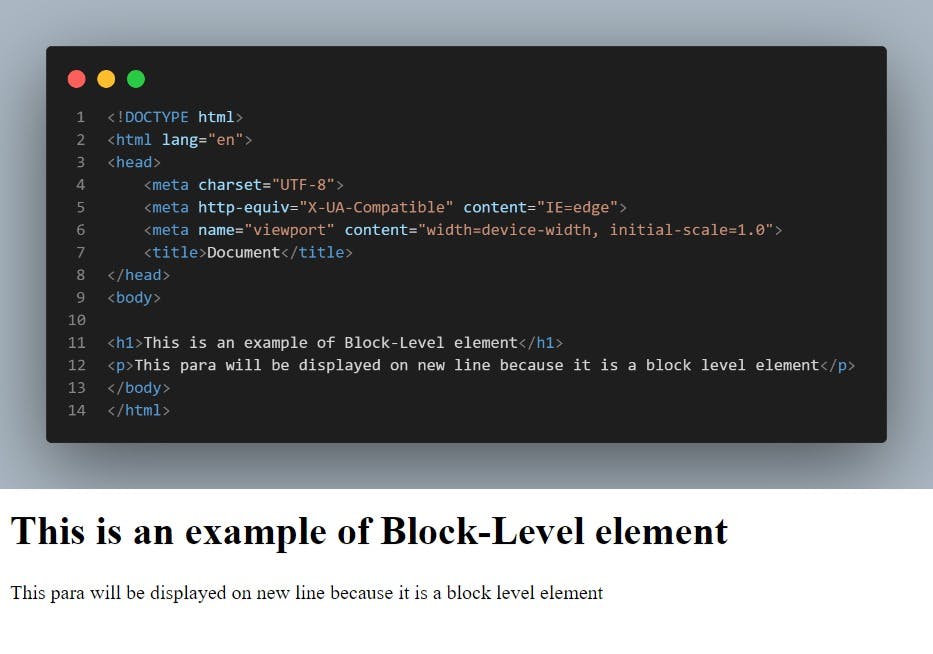HTML Element
An HTML element is defined by a start tag, some content, and an end tag.

HTML Elements Types
There are two types: block-level and inline elements.
Block-level Elements
The block level elements make up the document’s structure by dividing a page into blocks. They take up entire 100% of the available width. These elements are rendered with a line break before and after. They always start with new line. Some common examples of block-level elements include <p>, <h1> through <h6>, <div>, <ol>, <ul>, <li>, and <form>.

Inline elements
The inline elements take up only as much space as they need and they do not start with new line. Some commonly used inline-level elements include <a>, <img>, <strong>, <sub>, <sup>, <b>, <em>, <i>, <span>, <button>, and <input>.
Block-level elements may contain other block-level or inline elements. But inline elements cannot contain block elements.
